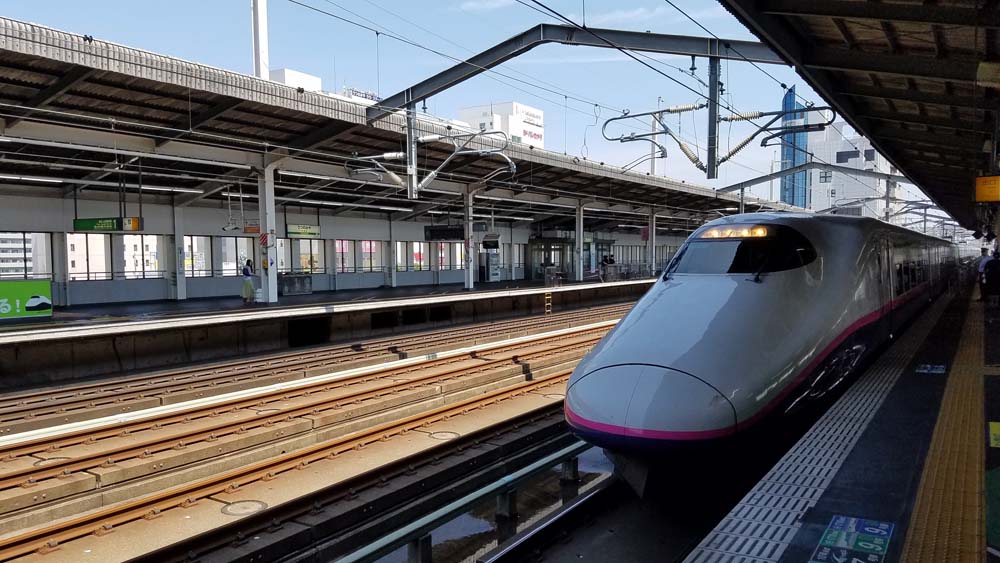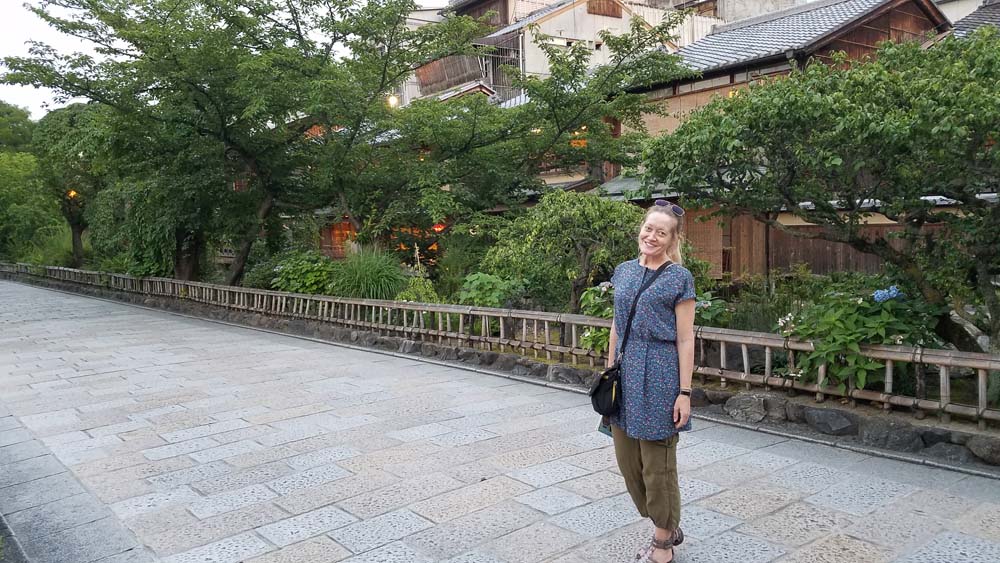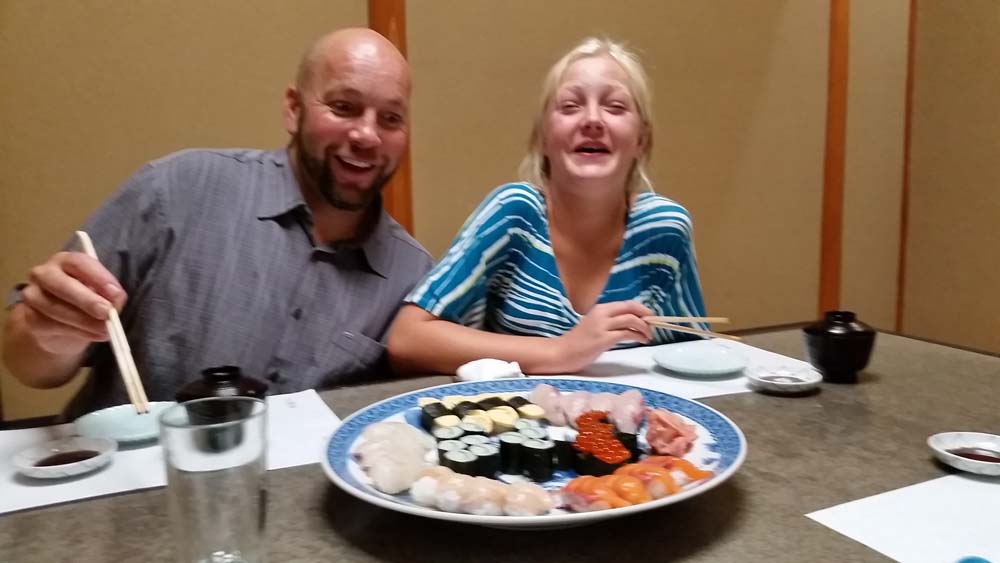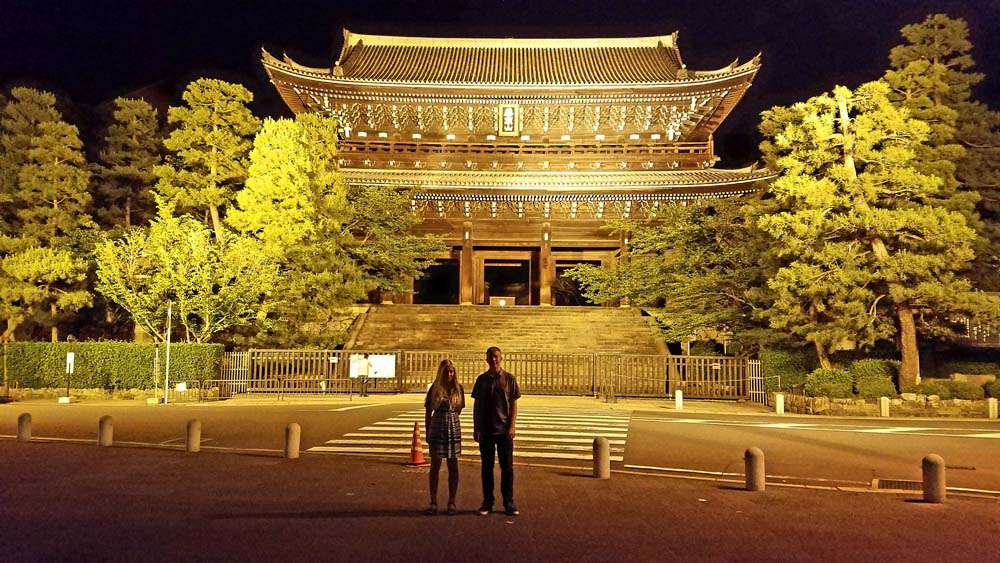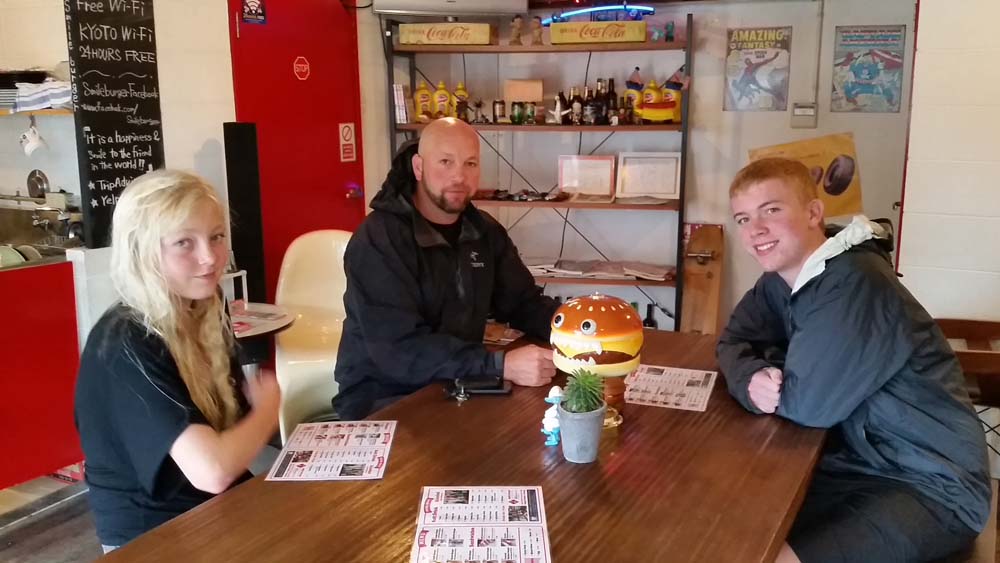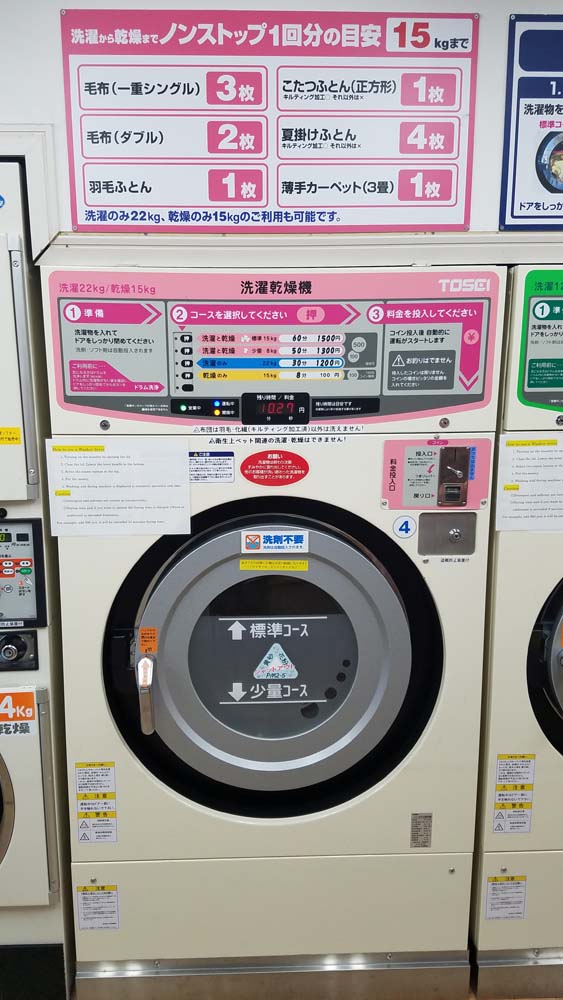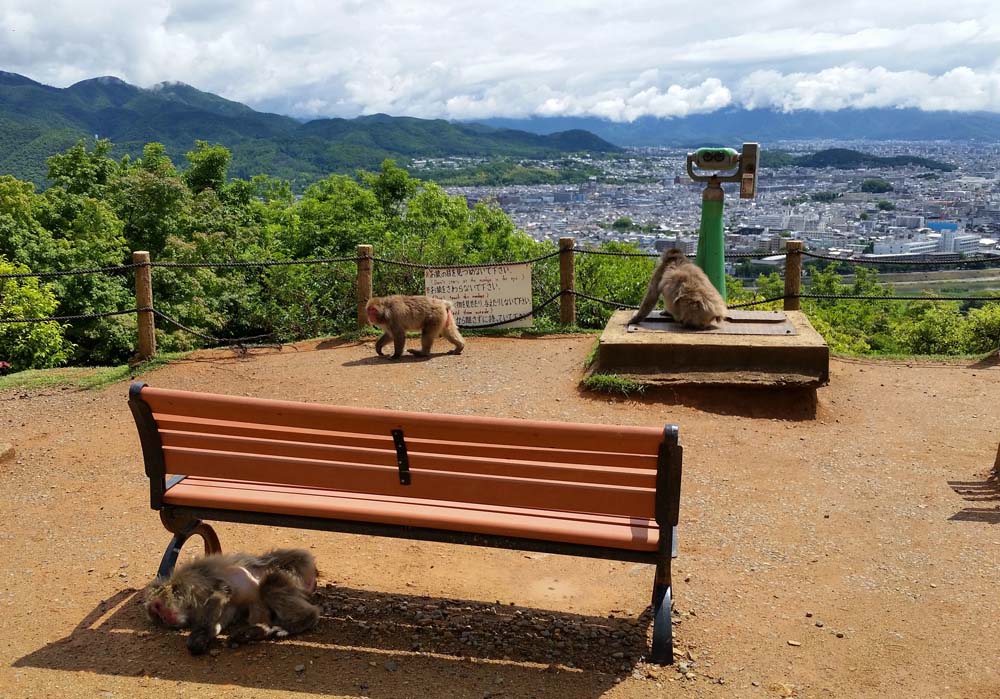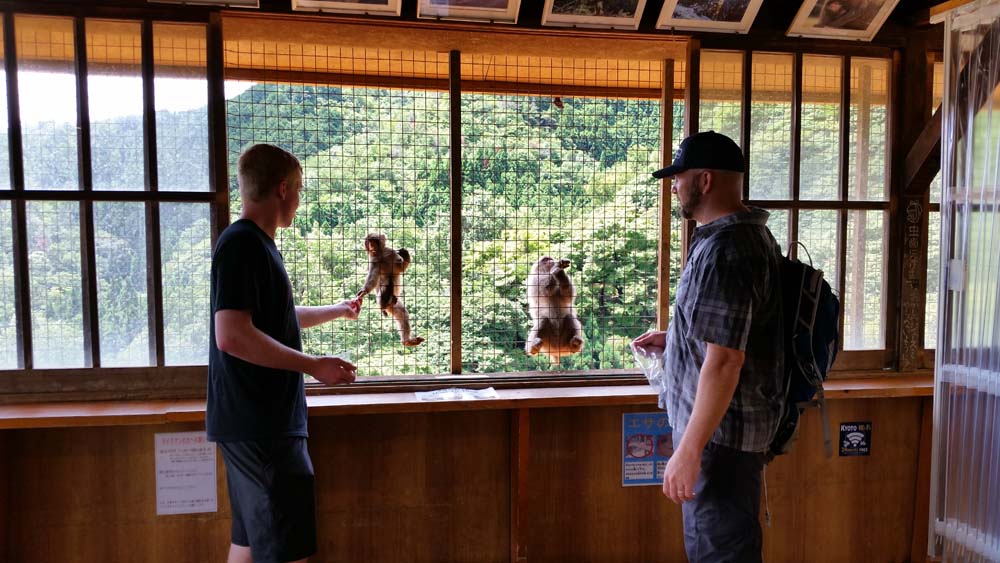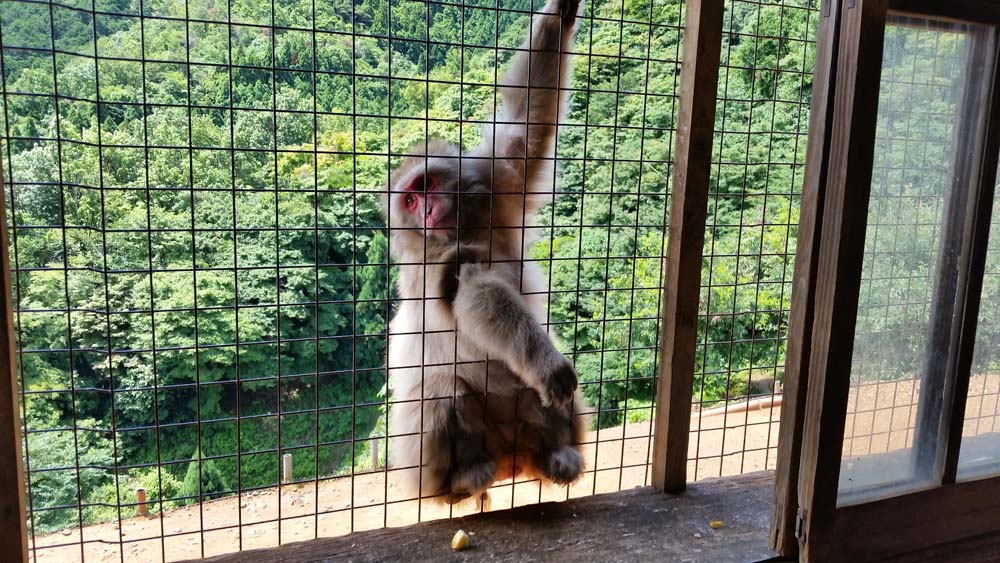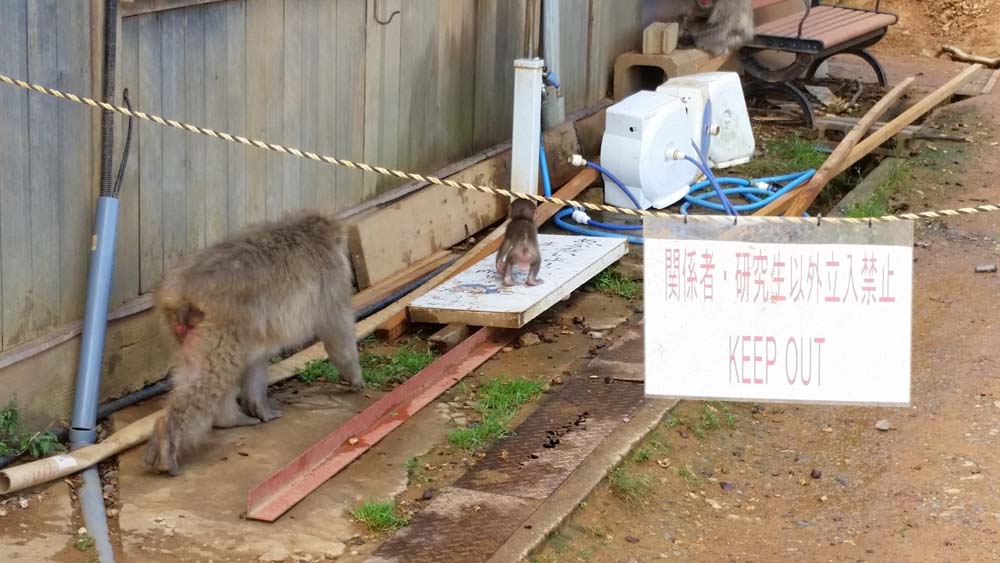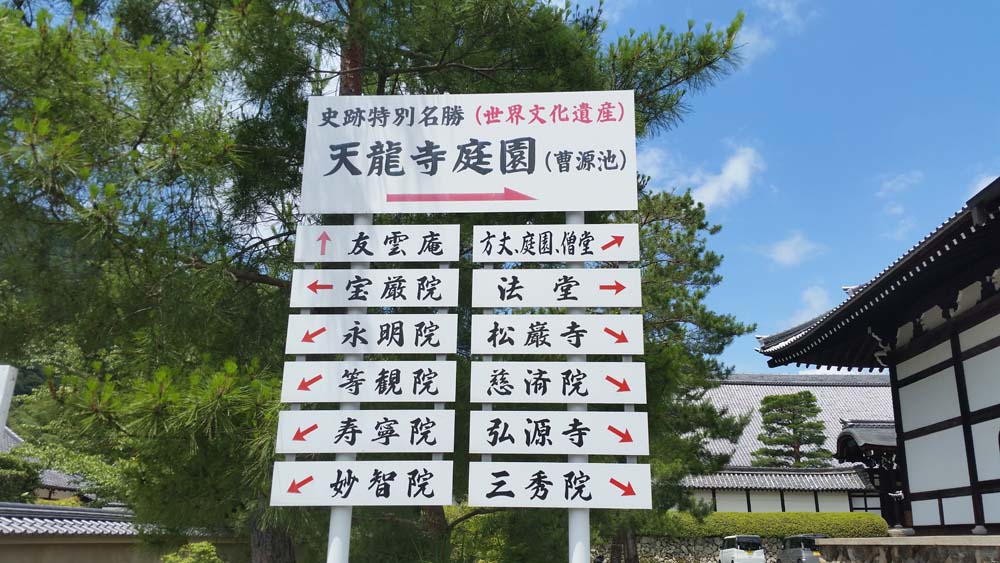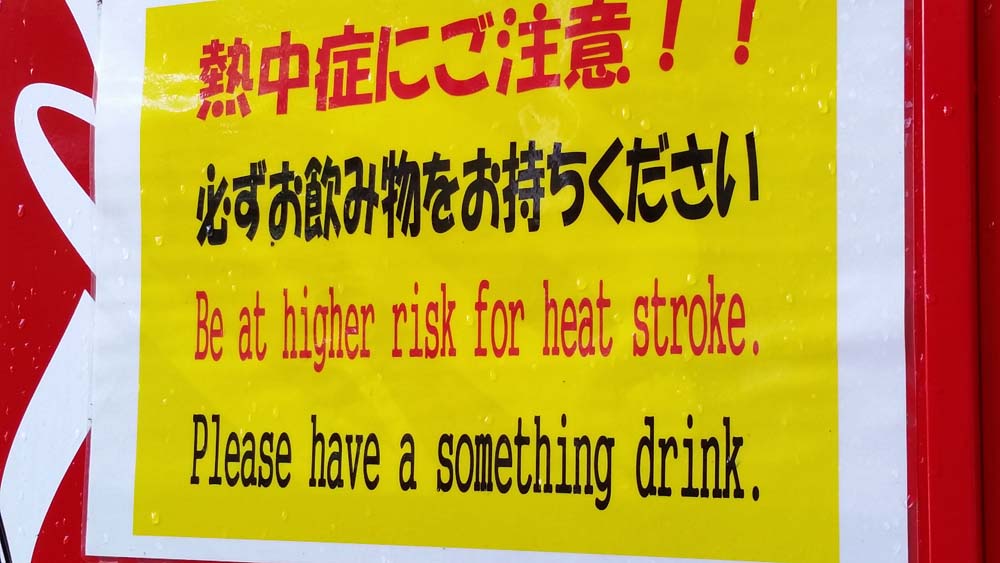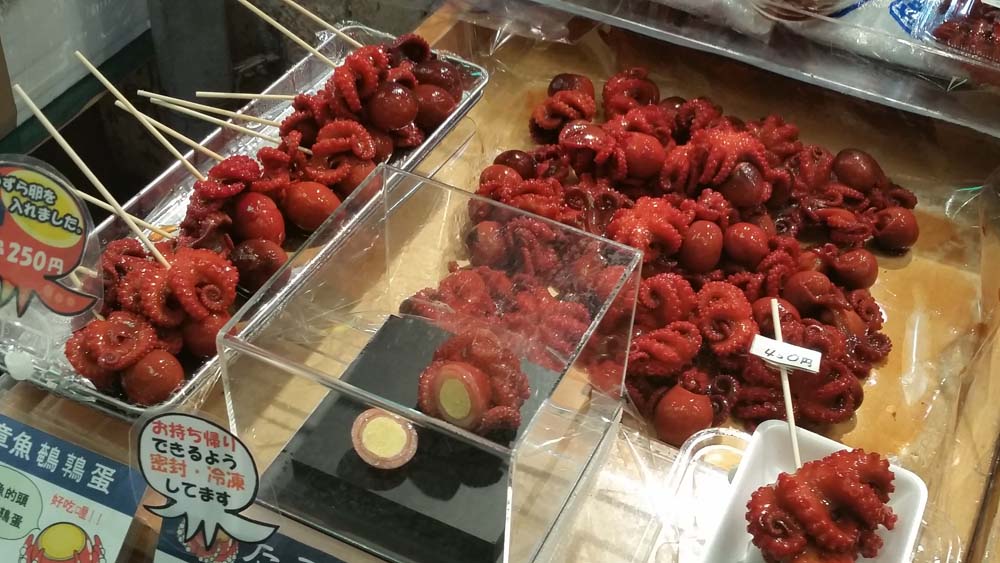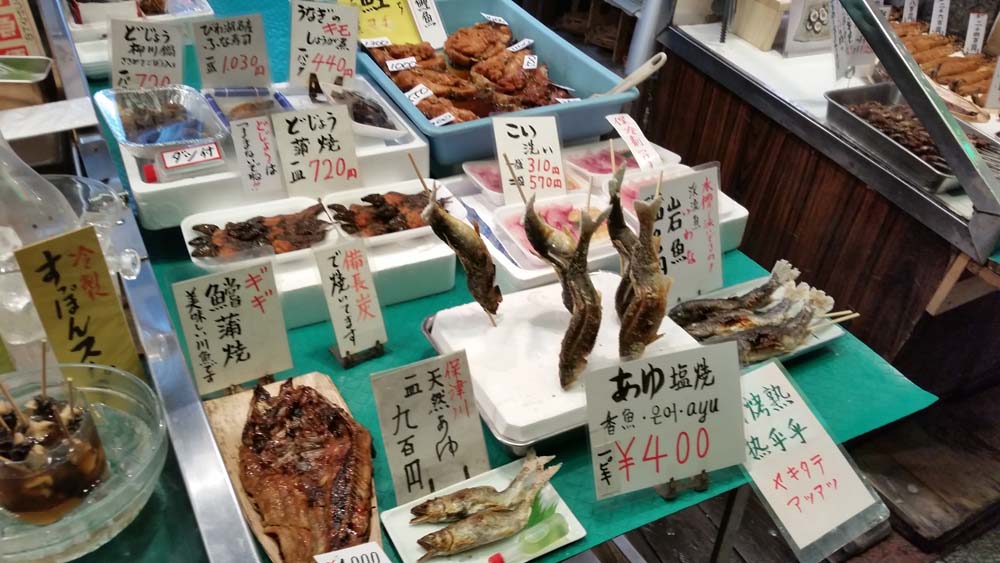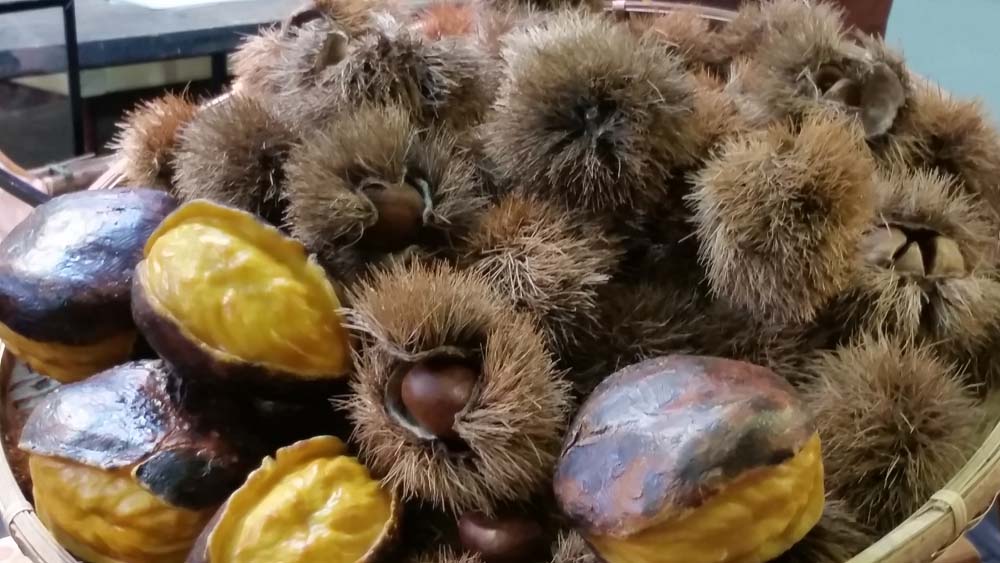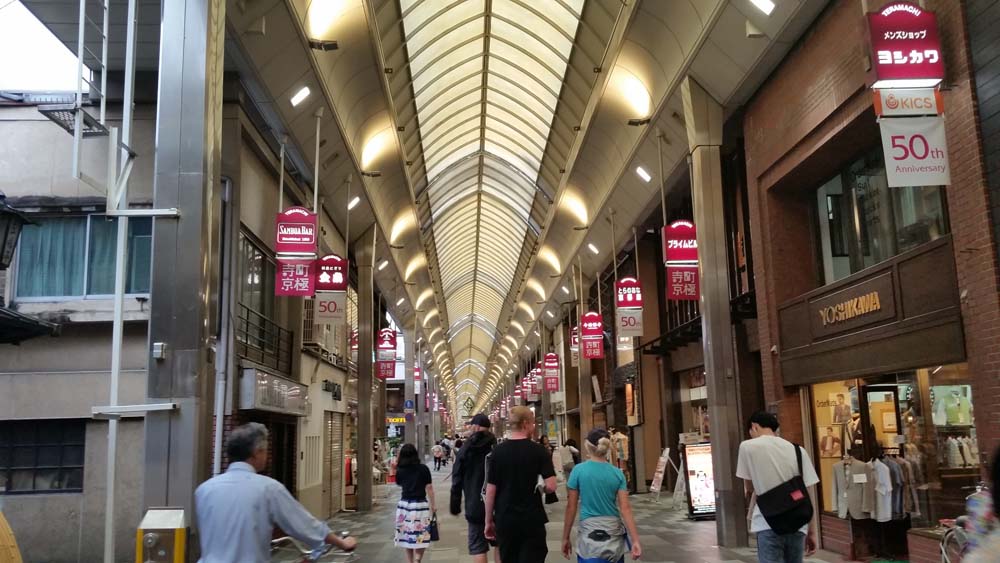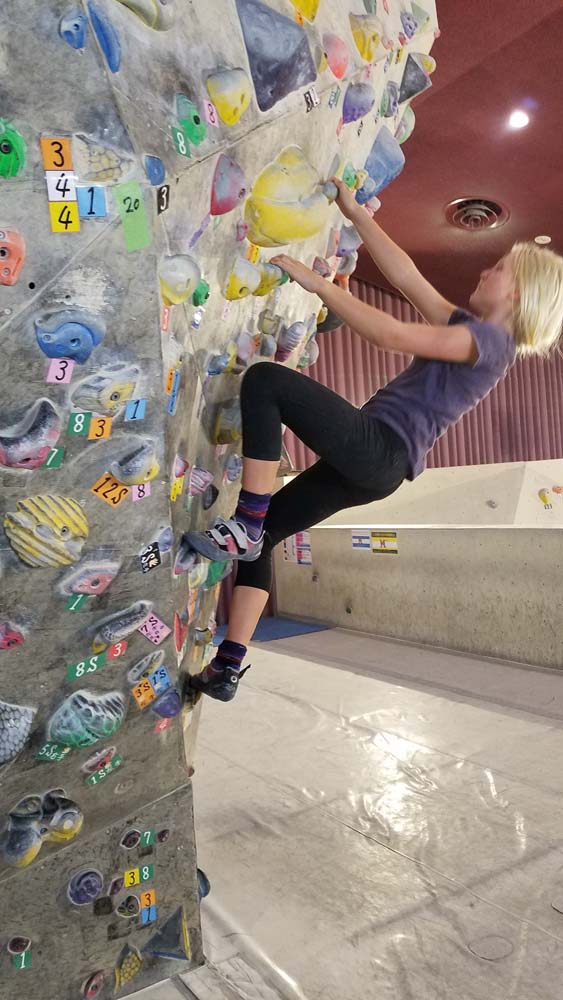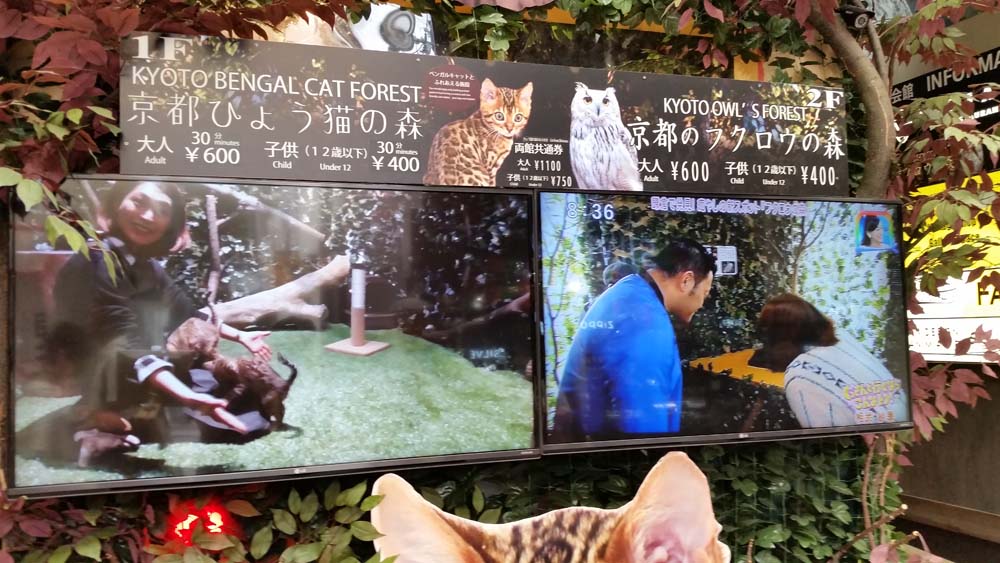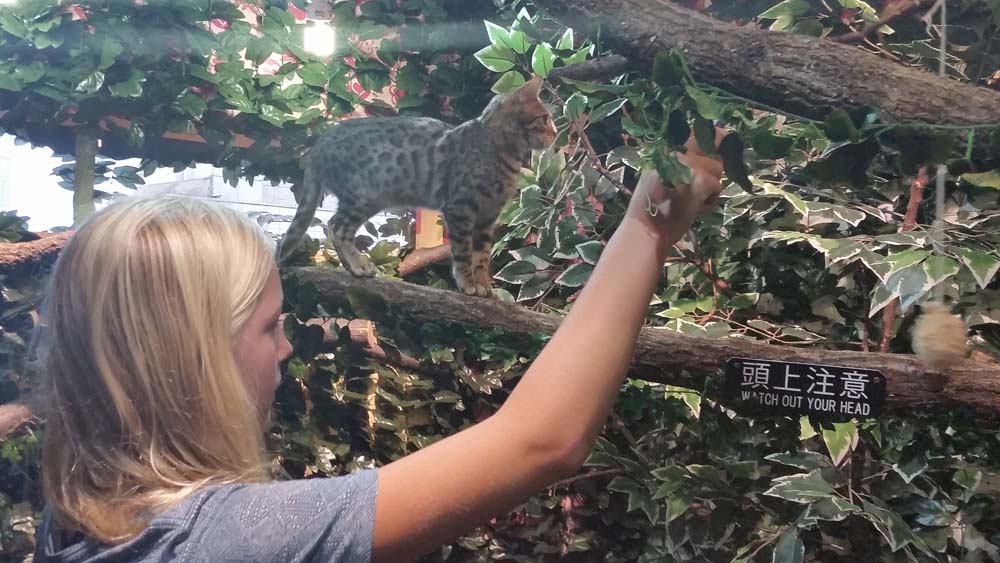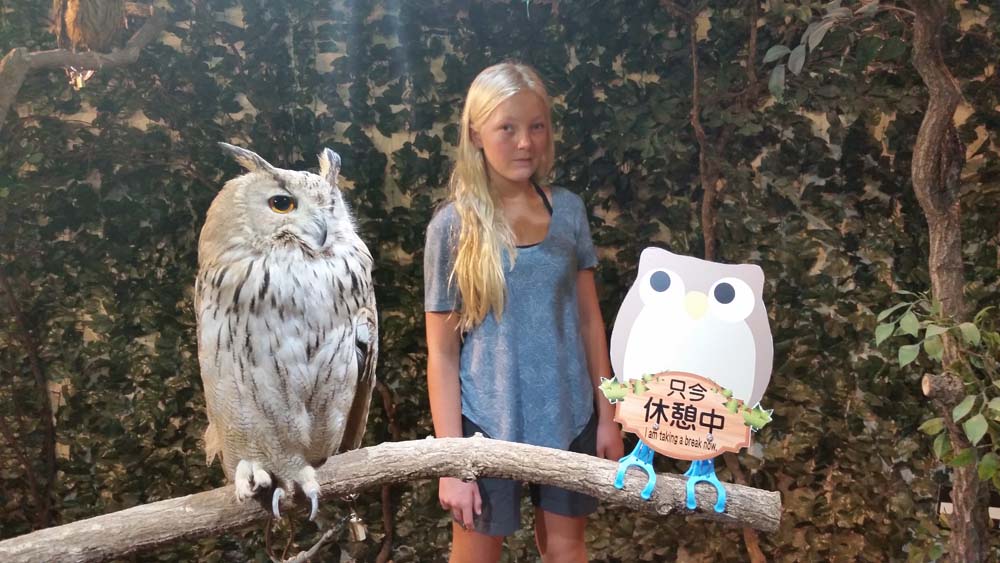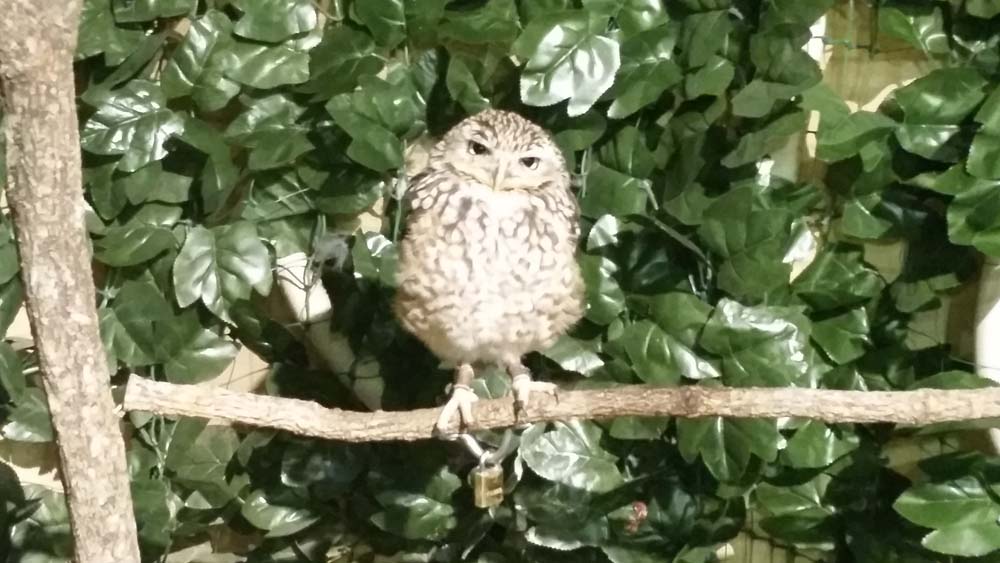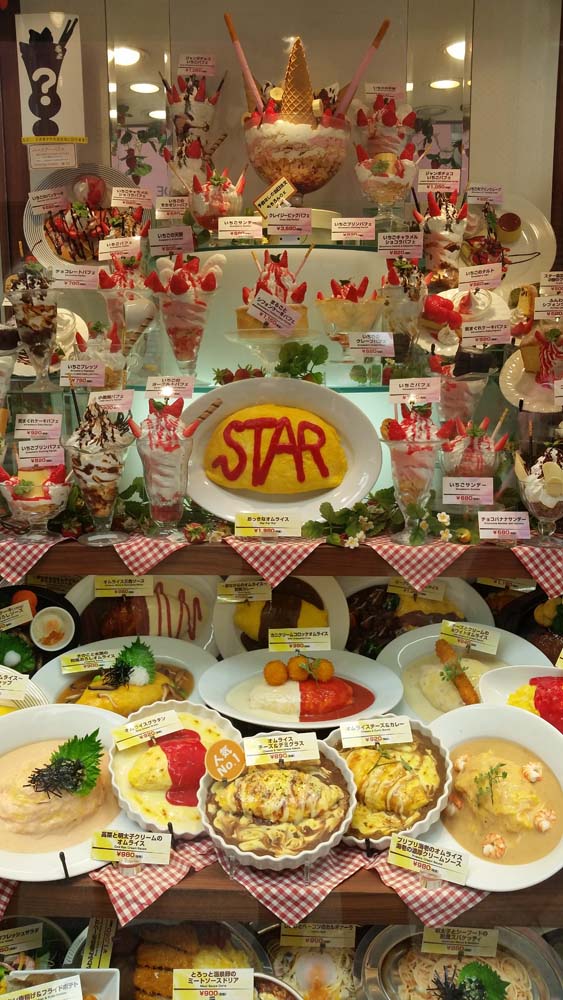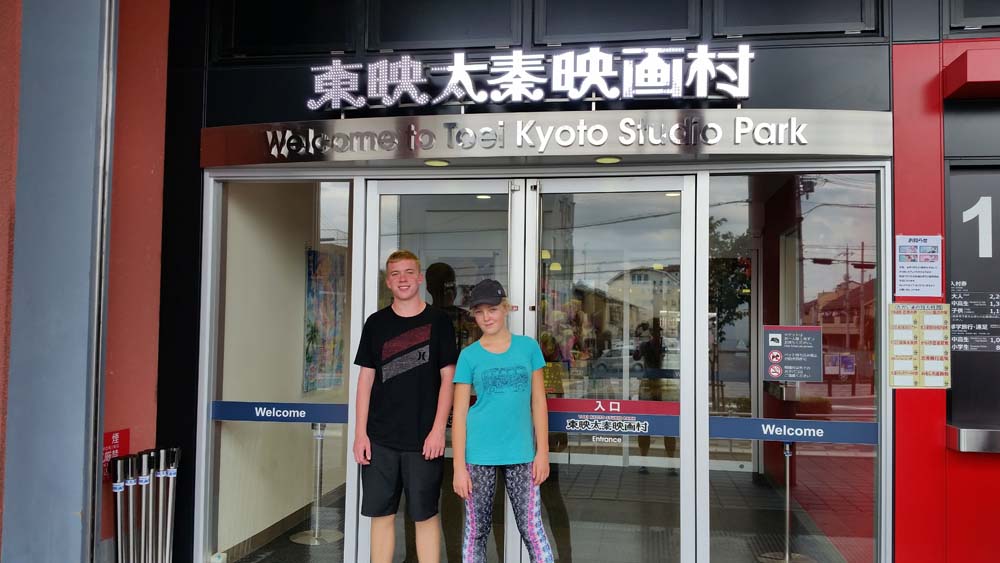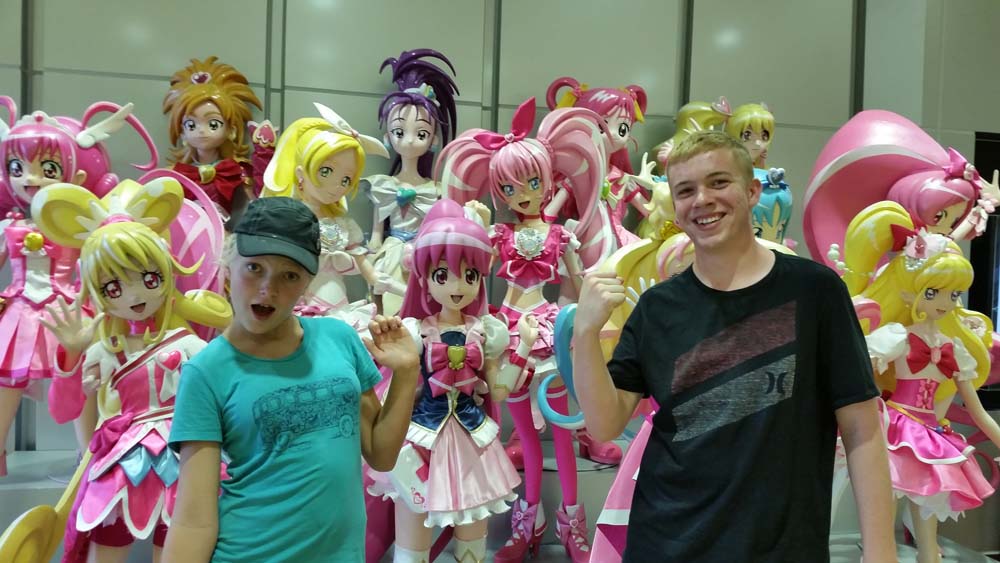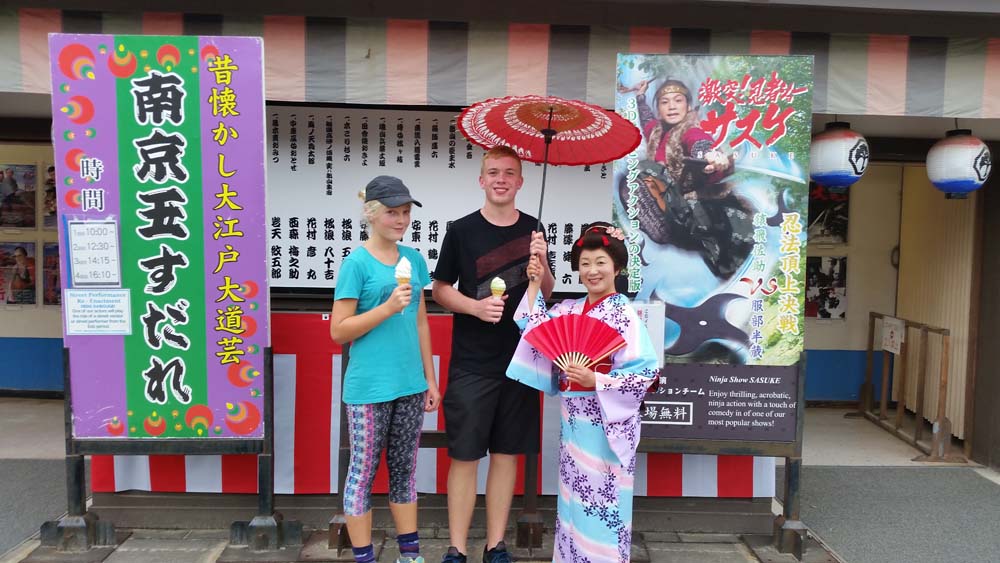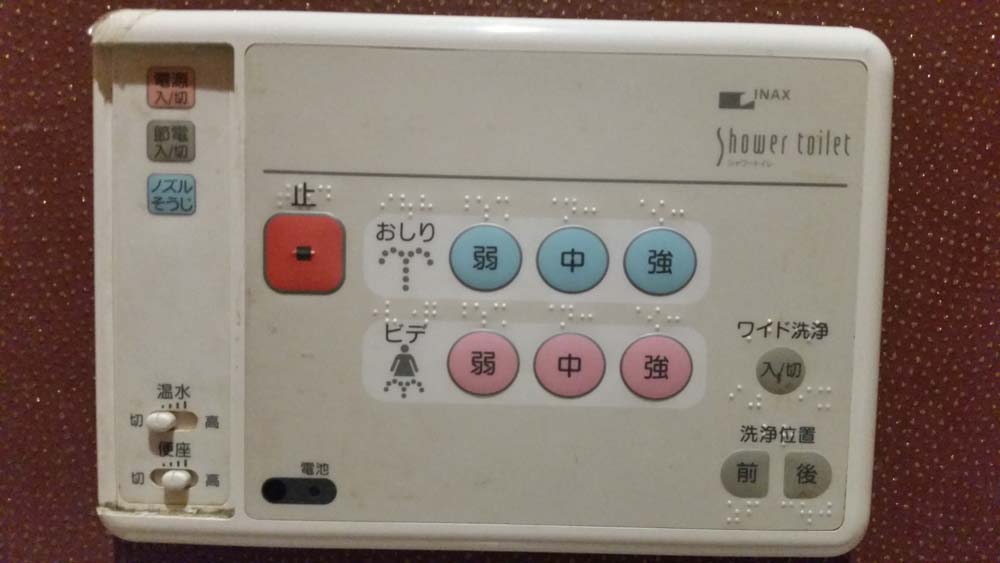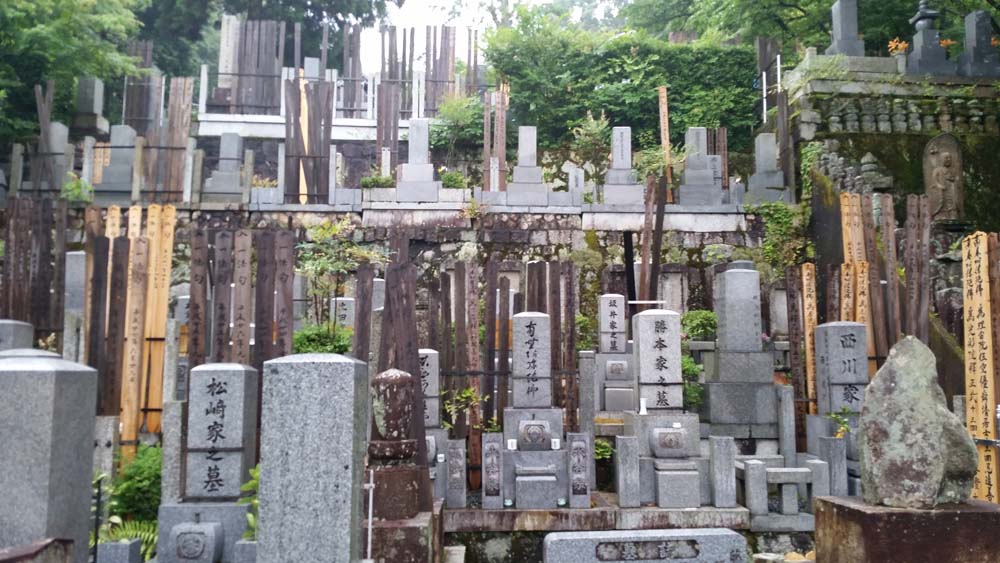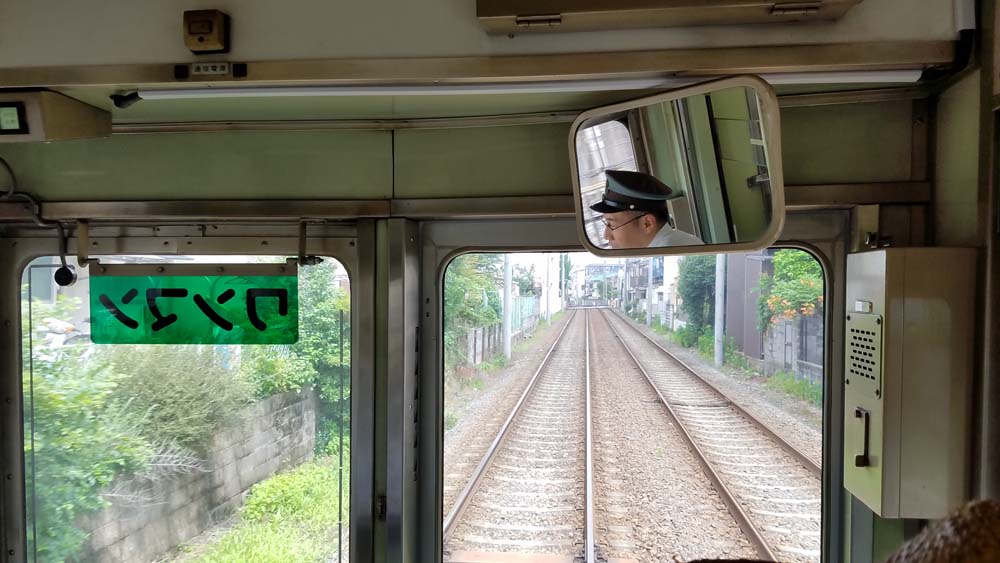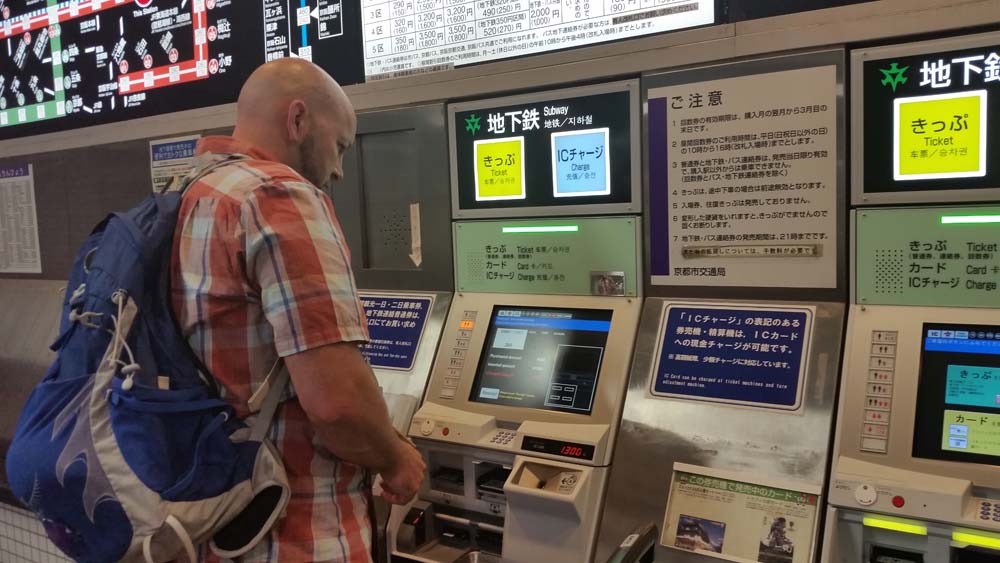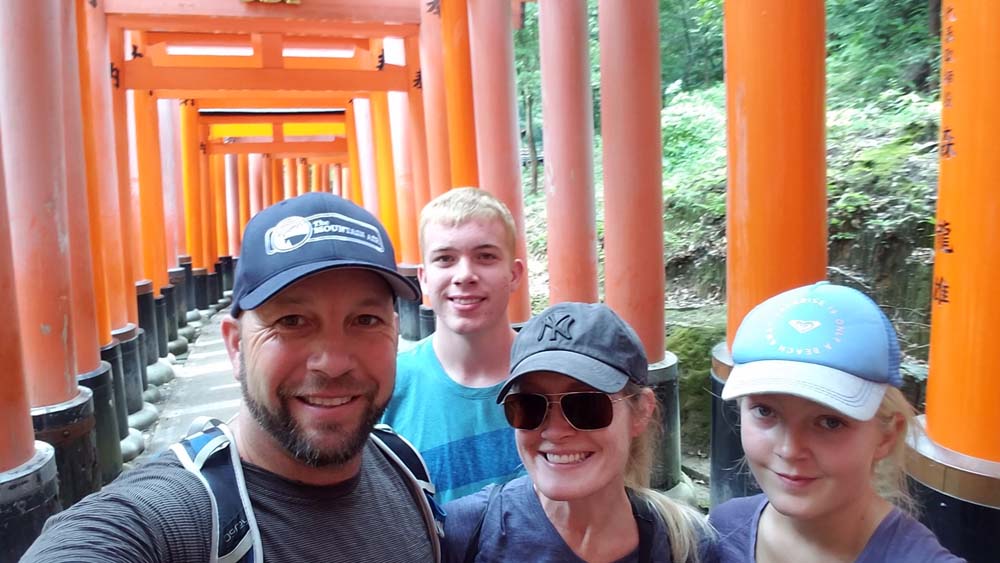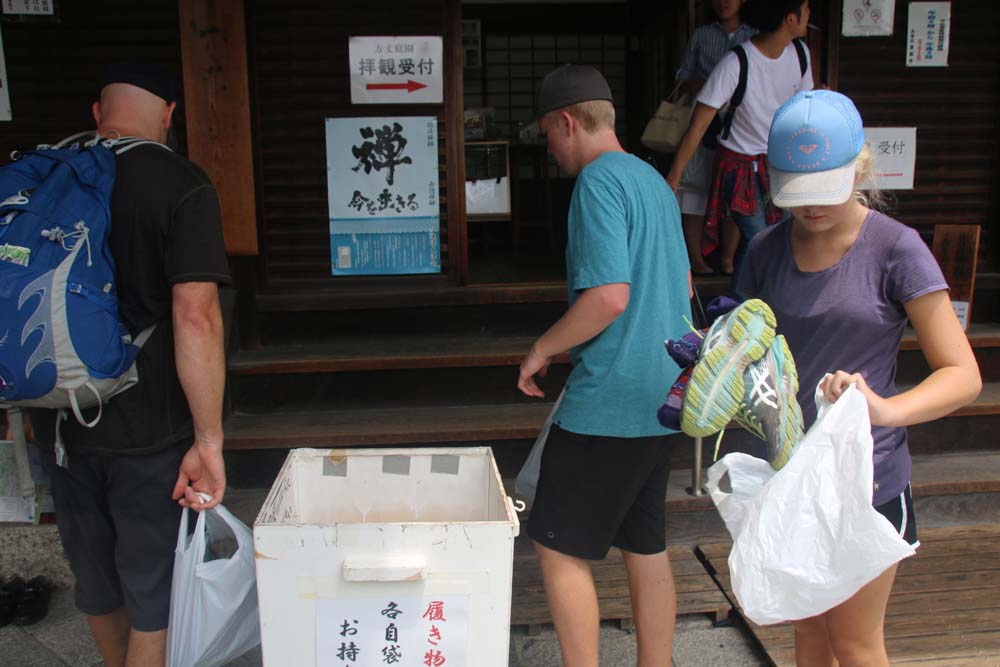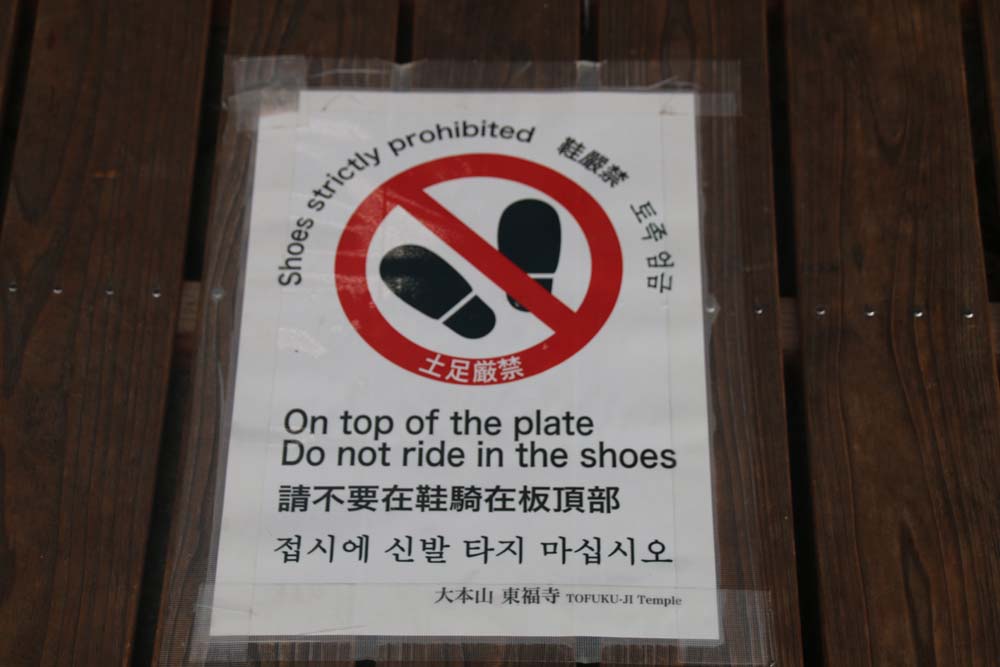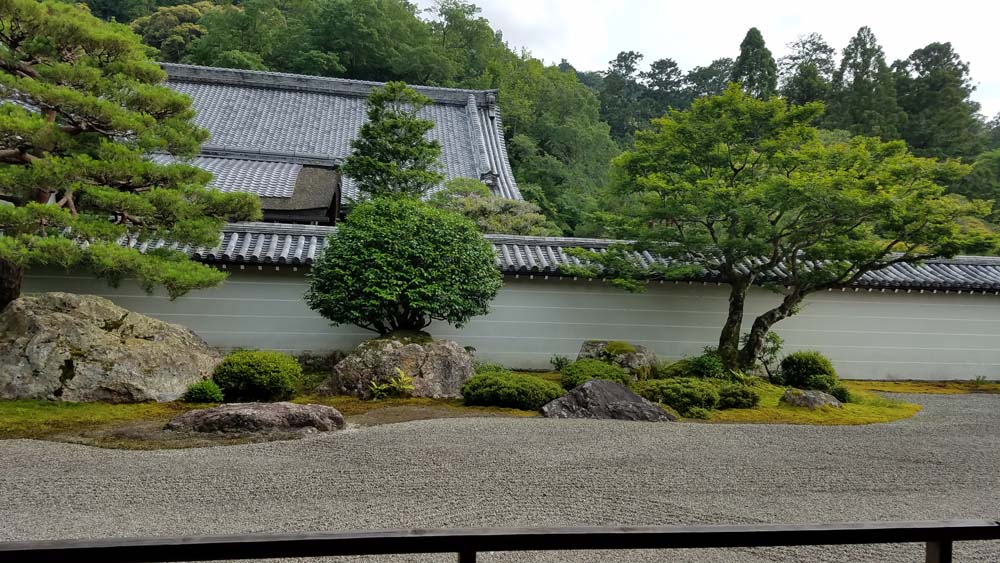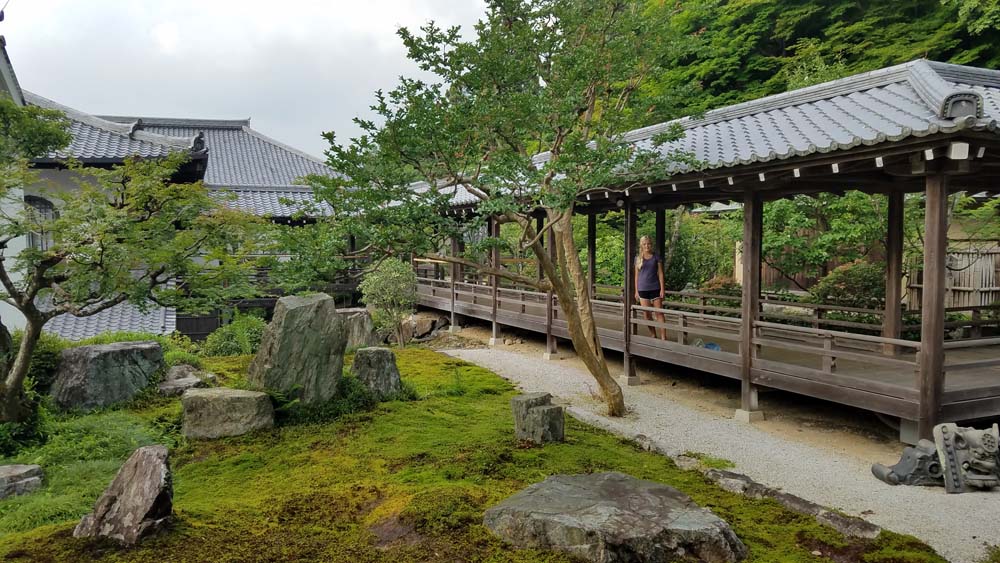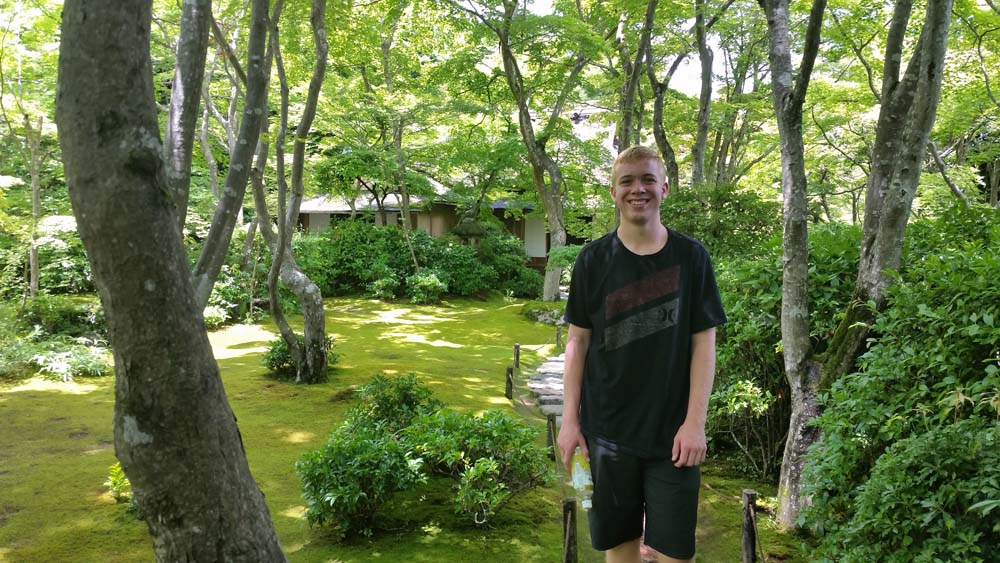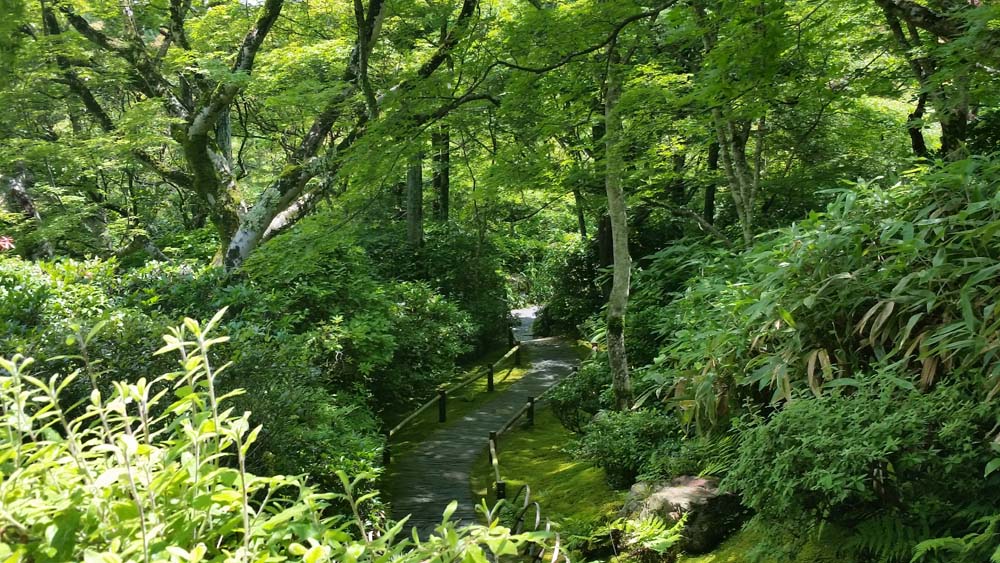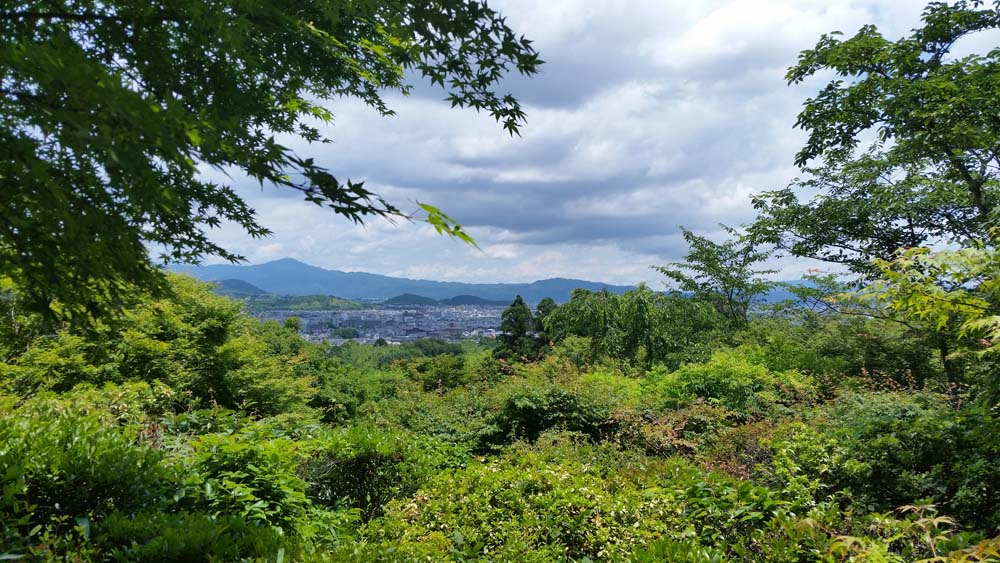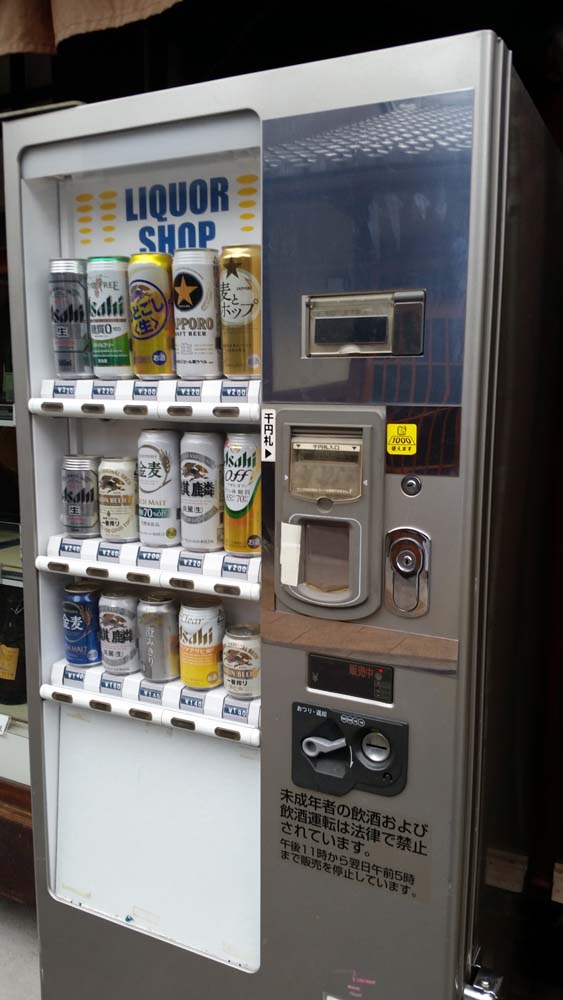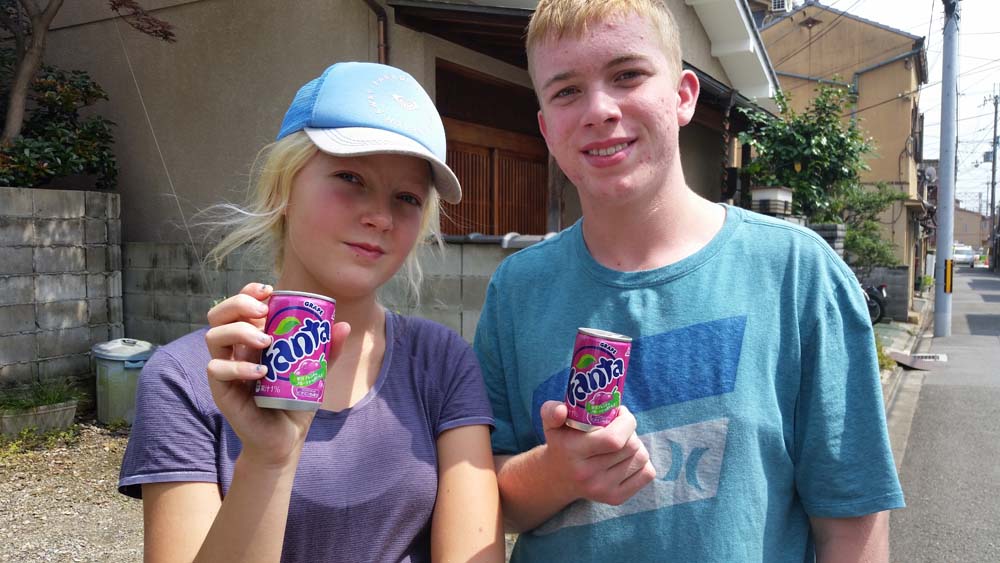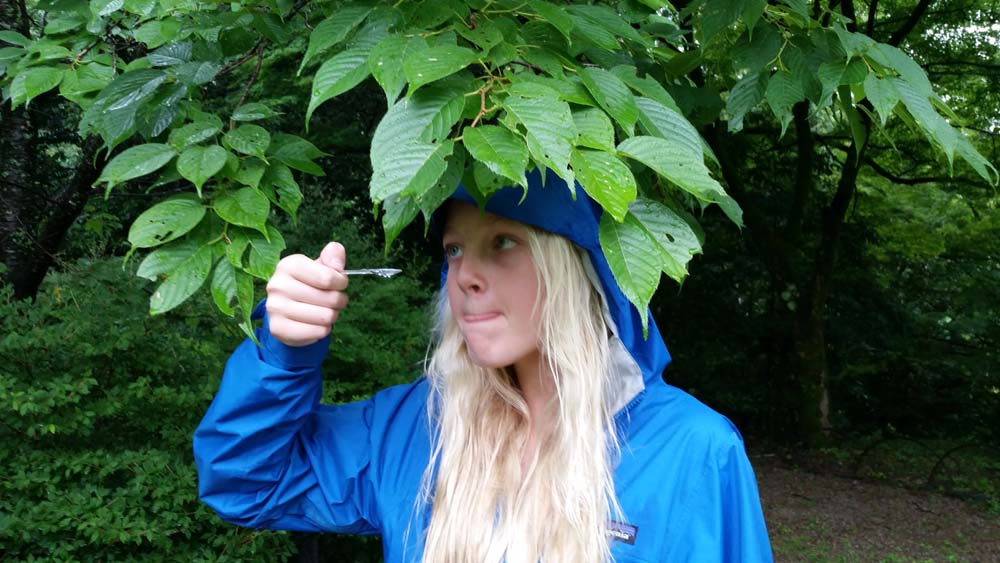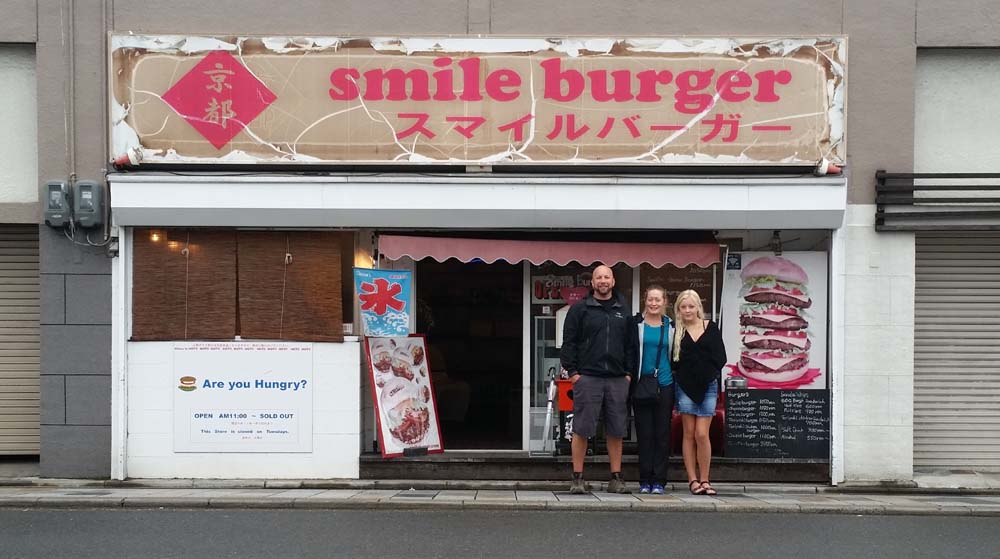 Adventuriety
Adventuriety
I’m just going to start by saying that this blog drove me crazy and took forever to write and rewrite and rewrite.
We chose Kyoto for five days because the overwhelming advice from both friends and guidebooks was to spend our time in Kyoto! There seems to be a consensus that Kyoto is the place to visit and when Japan is the topic, the questions range from, “Have you been to Kyoto?” “Are you going to Kyoto” or “Did you like Kyoto?” The guidebooks promise that the city at the top of your list should be Kyoto and then there are the snippets…”if you can’t make it to Kyoto…” or “the city most like Kyoto….” Kyoto has a crazy fan club cult like following and we didn’t want to miss out. We were motivated to see everything and fall in love and the train ride from Nikko to Kyoto was long enough for Scott and I to create a fairly ambitious tourist check list. We had the Lonely Planet Japan guide book and intermittent WiFi and in a few hours, a page full of tourist goals.
The city of 1.5 million people is difficult to capture in pictures and maybe even harder to describe with words. Like a Geisha, Kyoto is a complicated and ethereal creature layering beauty, mystic, history, culture, and the fast paced, contemporary style you would expect to find in a very cool and edgy metropolitan city. Mix those things together, add in the things that you personally find foreign and finally, standing before you is a multilayered beast almost too beautiful to look at, a bit disturbing and certainly too complicated to appreciate fully in five years, let alone five days. I think it’s one of those things…you either love it or hate it.
Kyoto has been around for a while. Archaeological evidence suggests human settlement in what became Kyoto as early as the Paleolithic period (tens of thousands of years BCE), but little is known about human activity in the area before the 6th century. The Kyoto basin was settled in the 7th century and by 794 it had become Heian-kyō (the city has had a few names), the capital of Japan. The city was laid out in a grid pattern modeled after the Chinese Tang dynasty capital, Chang’an (now Xi’an, which you’ll hear more about a few blogs from now) and strategically located in a basin, surrounded on three sides by mountains. Kyoto means “Capital City” and is called “the 1,000 Year Capital” because it was the capital of Japan for more than 1,000 years (from 794 to 1868). Kyoto was home to the Japanese imperial family until 1868 when the capital was moved to Tokyo by Emperor Meiji. Most of Kyoto’s architecture was rebuilt after the 17th century because of earthquakes, fires, and the Onin War, a civil war from 1467-1477. Today, Kyoto is an important cultural and religious destination for Japanese with more than 1,660 Buddhist temples and 400 Shintō shrines.
We arrived at Kyoto Station early afternoon and made our way outside to the “foreigner friendly” taxi queue. Immediately the driver handed Scott his phone and indicated we should ask him questions through Google Translate. It was fun and funny and a good first impression of Kyoto. We spent the thirty minute drive “talking” about table manners, as Japanese napkins were making me crazy. Usually a meal is served with a wet wipe in a plastic package and what does one do with that? Is it for use before, during or after the meal and do you put it on your lap? Evidently, with the help of Google Translate and some synonym brainstorming (another word for napkin?), the wipes are for swabbing your hands and face after your meal.
We started exploring Kyoto by wandering parts of the Southern Higashiyama Walking Tour suggested by Lonely Planet just as soon as our suitcases were safe in a cozy family room (four beds in one small room to Grant’s delight) at the hotel. The Higashiyama District is one of the city’s best preserved historic districts, which I think means lots of tourists, shops, restaurants and old looking wooden buildings. The Yasaka Pagoda is behind us, a structure that has been destroyed and rebuilt over the years (a thousand possibly).
Our walk took us though some beautiful neighborhoods like Ponto Cho, Ninen Zaka and the infamous, Gion. Gion is the area where one might spy a Geisha. I really wanted to see a Geisha, but I didn’t think it would happen. Geisha are like leprechauns or leopards; everyone wants to see one, but they are not interested in being seen. We got lucky though and as we turned a random corner, a striking figure came out of an alley and turned down the next street. She was tall, teetering on platform sandals, and dressed in a beautiful and brightly colored kimono, her face painted the traditional white and her hair a shining, black up-do. The sun was setting and there was a bit of a glow around her as she gracefully and mysteriously hurried away. Ashley and I smiled at each other and we walked on, only to see her a few minutes later trying to escape a surging crowd of tourists shouting and holding up cameras.
We looked for dinner options as we wandered this beautiful street in a neighborhood of many restaurants. The problem is that it’s hard to tell, especially if you don’t read Japanese, which building might be a restaurant and then how to locate the door. We could see people eating and chefs working in the windows across the canal, but walking down the street on the other side of the buildings, the entrances looked like private homes. We finally settled on a restaurant that had a menu outside and a clearly marked door, although once we entered everything became confusing.
We have learned this year that the best way to go about eating in restaurants in lands that you do not speak the language is to simply stand somewhere in the middle of an area where you will be seen by the staff and they will either do something with you (find you a table, feed you, etc.) or they will scoot you back out the way you came. We followed this protocol and walked through the door to present ourselves in what we thought was the restaurant. There was a long bar with a couple of patrons and a few booths. Everyone stared at us and then there was some discussion among the staff and then we were herded out the door and up a set of stairs into a foyer, the floor neatly covered with many pairs of shoes waiting patiently for their owners to return. The hostess left us, but not before motioning to our feet. So, another adventure began and this one in the name of food. We took off our shoes and placed them neatly on the mat to enjoy the company of their peers.
We were soon collected by another hostess and escorted to a private room that was a table surrounded by a padded bench and four walls. The only place to walk in the “room” was the bench running around the table. The hostess closed the sliding door noiselessly and we were alone to contemplate what had just happened and what would happen next. In a few minutes our waitress slid open the door and distributed menus, walking around the table on the bench and kneeling next to each of us as she gave us our menus. And this is how the whole dinner transpired. We ordered drinks, the waitress glided in and knelt four times to place each drink and again for each course. She knelt eight times per course, four to remove dishes and four to serve the next course. All I could think was that the girl must have thighs of steel.
The food was good and we shared things so Ashley didn’t have to choke down too much sushi. After the last course of fruit, we sat for a long time, so long that we felt a bit abandoned. I’m sure the problem was that we didn’t know the correct end of dinner conventions and so we simply left our little oasis and slowly made our way down the hall looking for someone who would not want to let us leave without paying. Sure enough, our waitress found us and led us downstairs after we had reclaimed our shoes. By the time we made it to the register, there were at least four staff members waiting to send us off with a warm farewell and much waving, smiling and bowing. It was an unforgettable dinner.
We walked past the beautifully lit Chionin Temple on our way back to the hotel. It is the head temple of the Jodo sect of Buddhism (a branch of Pure Land Buddhism) which has millions of followers and is one the the most popular Buddhist sects in Japan. Shinto and Buddhism are Japan’s two major religions although Shinto or “way of the gods” is more ancient culture than religion. Buddhism was imported from China and Korea in the 6th century and adopted as the new state religion by ruling nobles. Years later, the Meiji government favored Shinto as the state religion and tried to separate it from Buddhism. Eventually the two belief systems were able to coexist and even complement each other. Still today, many Japanese follow the ways of both Shinto and Buddhism.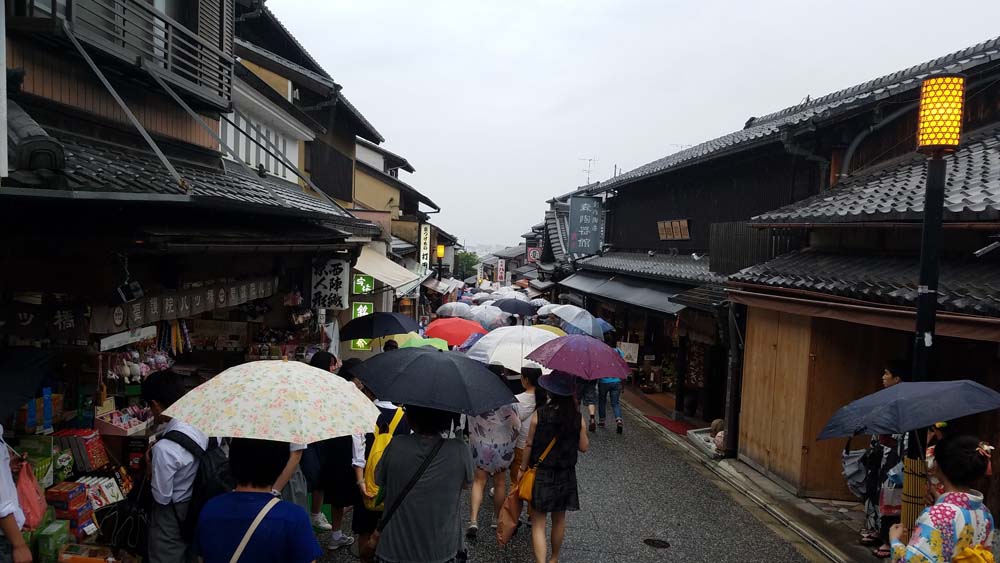
We continued with our list the next day. This is Ninenzaka neighborhood on our way to Kiyomizudera Temple, one of the most celebrated temples in Japan. According to guide books it is one of Kyoto’s most popular and enjoyable temples and it was absolutely packed with people, but we were not going to see the temple. We were looking for Tainai-meguri.
Tainai-meguri is an adventure recommended by Lonely Planet that doesn’t take a lot of time (unless you go after 4:00 pm and have to come back the next day) and is different and fun. You pay a nominal entrance fee, take your shoes and socks off and put them in a plastic bag and symbolically enter the womb of a female Bodhisattva. I was a little bit nervous I must admit because you hold onto a rope with your left hand and use use right hand to shield your face as you walk into complete darkness. You follow the rope through corridors until you come into a room with a lit stone. The light is supposed to represent rebirth and you place your hand on the stone and make a wish.
Scott told me that if I wrote the Kyoto blog as a blow by blow of our time in Kyoto, it would be painfully boring and long and he was right. We were well into our list by the time Father’s Day arrived, accomplished tourists, tired and hung over from the sight-seeing circuit. Scott, as only he can do, put the brakes on and insisted that we spend the rainy morning enjoying the view from our room while playing cards and Duolingo in honor of Father’s Day. Later, we would go out for burgers. We had spent two days following the crowds, the recommended itineraries, and doing what everyone else does in search of the Kyoto magic and we were tired.
The day was restful and cozy and then we went out for burgers at Smile Burger. Waiting for our dinner, we started talking about the burger place we visited twice in San Sebastian, Spain, and I realized at that very moment, the trip felt like us. It had felt that way hiking in Nikko and now again.
We are not great planners or organizers but we are really good at doing our own thing, adventuring with authenticity and variety (adventuriety!) and making it up as we go along. We like bushwhacking (don’t tell Scott), eating pig’s ears and carrying on conversations with crazy, but helpful Italians in Italian, even when we don’t speak Italian. It’s all fun and different and doesn’t come with directions or expectations.
I knew all of this, but I never thought about it until Smile Burger in Kyoto. We had been in Japan for a week and had yet to hit our stride. Adventuring with authenticity of course translates into your basic quality life lessons: be an individual, choose your own path, find your own brand of happiness, and for goodness sake, take your own trip. Sitting at the table waiting for burgers (that I heard were really delicious) and chicken sandwiches (that were not) the trip felt like “us” for the first time since we arrived in Kyoto because who eats burgers in Japan when there is a lot of very good food everywhere one turns? Well, we do, and it felt like us, not like something the guidebooks or websites would advise.
So, did we ever find our own Kyoto? We certainly tried and I think we found it here and there, but it was neither easy nor magical. The night I laughed the hardest and had the most fun was the night Scott and I decided to have a laundry date. We stuffed all of the dirty clothes into a suitcase, consulted with the hotel concierge and took a short cab ride. The laundromat was tiny with some signs in English like “No Shoes Allowed” but not the important ones like how to choose the cold water cycle for our beloved Smart wool shirts and shrinkable cotton button downs. The concierge had told us that the washing machines did everything from soap to softener to drying so we had some clues, but probably spent twenty minutes trying to figure out the button for cold water wash. We gave it our best guess, deposited coins and headed next door to explore the convenience store while our clothing was transformed.
We perused the sake and snack isles, marveling at the variety of both, purchased some refreshments and went back to wait outside the laundromat because the “No Food or Drinks Allowed!” sign was in English too. Our plan was to remove the clothes before the drying time was up and take them back to the hotel damp to finish drying. We enjoyed our snacks and went to retrieve the laundry only to find that the washer/dryer door was locked. We couldn’t open it, our clothing, our heat adverse cotton and wool, was being held hostage inside a very hot dryer. We frantically pushed buttons and pulled on the door. We interrupted a girl talking on her phone and folding her laundry. She just shook her head when we mimed trying to open the door. It was hopeless and sad watching our clothing cook, but kind of funny too.
This is our nemesis. I laughed so hard, especially when Scott started making up stories about what we should tell the kids. And the thought of trying to find clothing to fit us in Japan was comical too, in a daunting sort of way. Our clothing had shrunk and we spent some time that night dipping, stretching and hanging our clothes up in the bathroom, but nothing was irreparably damaged and we learned some valuable and culturally significant lessons about the dangers of the Japanese laundromat and the wonders of the Japanese convenience store.
Another fun adventure was the Iwatayama Monkey Park in the Arashiyama mountains. A steep but relatively short hike is rewarded with a great view of Kyoto and a troop of Japanese macaque monkeys. There are monkeys are wild and everywhere you look and a few times a day they are fed out in this open area, to music no less. One of the park employees scatters food while monkeys come running from every direction.
For the monkeys that still want a snack and the people who want to feed them, there is a building that you go inside, purchase apples and nuts, and feed the monkeys through the wire.
This fellow was clever and cantankerous. If the the food item offered was not up to his liking he made a face a threw it down. He preferred the nuts to the apples.
This mother was so sweet and I felt her pain as she watched her little monkey do endless tricks on the rope and then when that got boring he would venture off beyond the “keep out” sign. She would patiently retrieve him and bring him back behind the roped off area where he would begin the whole process again, just like a little curious human toddler.
I love signs and have enjoyed them throughout our travels. Kyoto had some really good ones. It may be irreverent, but these cemetery signs made me chuckle.
The sign with all of the Japanese characters and arrows summed up my feelings about Japan…confusing…and the other sign was on the hike to visit the monkeys and self explanatory.
Nishiki Market is a fun place to take a walk. I read a review that said the best thing about Nishiki Market is the sheer abundance of food items you have never seen before and will never see again.
We tried none of the above items, opting instead for really yummy, greasy fried shrimp cakes and mashed potato balls.
Nishiki Market is attached to blocks of shops that have been connected with a high ceiling to create a mall with all kinds of stores and businesses.
There was even a climbing gym where Scott took the kids for a few hours.
While the kids climbed, I drifted aimlessly through the shops trying to take it all in. I found the messages on these piles of Tshirts interesting…Please let this work…Change…People Change Memories Don’t…What you think of yourself is more important than what others think…Protect your Spirit…Everyone has their bad days…Keep it fun…Gleam shine your light…Vale la Pena (Worth it)…Devouement (Devotion). And then there was my personal favorite…People who love to eat are always the best people. I agree with that last one for sure, but the sayings also made me think about the kind of people that would want to wear these messages. Are they happy people?
Ashley and I visited the Kyoto Bengal Cat Forest and Owl Forest one day, also in the “mall.” We were tired of sightseeing, the boys were off doing something, and Ashley was missing her cat. We had visited a cat cafe in Tokyo that was certainly different, but the cats were very well taken care of and didn’t lack for attention and adoration.
Likewise, the Bengals were healthy, the room clean, but there was an empty feeling. The cats played with each other, batted at the toys Ashley offered and then paced up and down the fake trees.
We weren’t going to visit the owls for obvious reasons, but after the cats we wanted to see if the owls were well taken care of. It was horribly sad, these beautiful creatures locked to branches with actual padlocks. There were signs everywhere describing how the owls were taken care of, but no amount of signage could explain away what we witnessed. It was heart breaking and it was another glimpse into a culture that is different from our own and has a different perspective of what is acceptable or right. You might wonder why I’ve included the cats and owls as “our Kyoto.” This is the kind of experience that makes me think, it makes me wonder about the people, it’s insight like nothing you will find in a beautiful garden, shrine or temple and that is one of the things I love about traveling. The pretty stuff is not always the good stuff.
There are awesome fake food displays everywhere and they are much easier to look at than owls or cats.
Grant chose the Kyoto Studio Park because it has actual movie sets and fun things to do. The place was mostly deserted and a lot of fun.
The giant green screen provided entertainment for all of my kids so much so that I think we need one at home.
The kids had a great time and even got a picture with a pretend Geisha, who was much shorter than the real thing, but happy to pose for a picture.
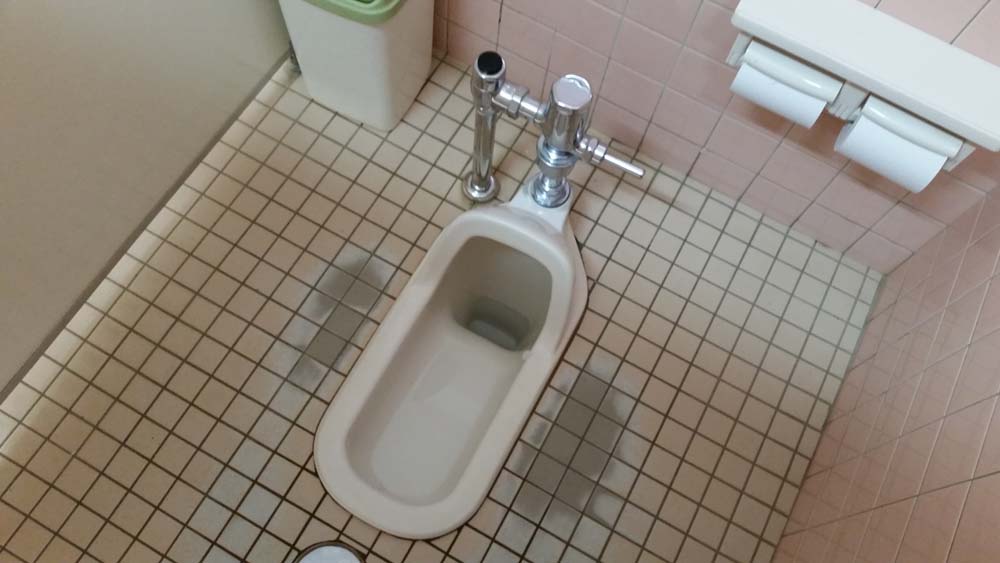 Toilets were another adventure in Japan. There was a wide, and I’m talking wide as the Grand Canyon, variety of toilets in Japan. Here we have your basic squat toilet.
Toilets were another adventure in Japan. There was a wide, and I’m talking wide as the Grand Canyon, variety of toilets in Japan. Here we have your basic squat toilet.
And the other extreme, shower toilets, and even some with a sound option in case you don’t want anyone to hear you peeing… or making other noises.
I liked the cemeteries in Kyoto too…I thought they were beautiful and interesting. The wooden sticks are prayer sticks.
And obviously people take care of the tombstones.
We spent a lot of time on the trains and while they are very clean and on time…
They are confusing and not super convenient. Scott was frustrated that for all of the hype about hiking and nature in Kyoto, it is not easily accessible by public transportation.
Looking back, we found a lot of things in Kyoto that felt like us, but it was a struggle because for every little nugget of Scott, Daisy, Grant and Ashley, we mixed in the “uber tourist” and the following is some of that. Kyoto is a big city with a lot of shrines and temples and you probably only need to see one or two because after a while they all look the same and many of them are very crowded. We visited Kyoto during the worst month to visit weather-wise and it was still crowded in addition to being hot, humid and rainy.
We visited Fushimi Inari Shrine, the number one thing to do in Kyoto on TripAdvisor. The shrine is the most important of several thousand dedicated to Inari, in ancient times, the Shinto kami (spirit) of rice, agriculture and silkworms. Over the years Inari’s responsibility has become success in business and today the thousands of vermillion torii gates, not the shrine, are what people want to see.
The gates are actually offerings to Inari and business people and companies spend thousands of dollars (around $10,000 USD for the big gates near the bottom of the mountain and our backdrop) to give thanks by purchasing a gate. We went to see the gates and especially the “hiking trails.” We were looking forward to hiking to the top of the sacred “mountain,” Mount Inari, that multiple websites promised would be a grueling 3-4 hour round trip, but it’s not.
A torii gate symbolically marks the transitions from the ordinary to the sacred and vermilion is a color; brilliant red or scarlet, pigment originally made from the powdered mineral cinnabar. There are thousands of these gates straddling trails leading up the mountain. There is one main trail leading to the top of the mountain and many lesser trails leading to smaller shrines. This trail was a very steep and hot wrong turn.
Fox statues are everywhere because they are believed to be Inari’s messengers .
These are some of the smaller shrines complete with foxes and mini torii gates (for those with smaller budgets) along the labyrinth of paths leading to the top of the mountain.
We made it to the top of the mountain, but it was definitely not the hike I had envisioned. The mountain trails were steps and never along the path did I really feel like I was in a forest on a mountain until we took a wrong turn on the way out…
We had ignored the “no exit” sign and followed what looked like our chosen route on the map. Obviously we were still within the borders of the Inari complex but this area was full of cats instead of tourists. Away from the crowds, the afternoon felt more personal.
We were soon on the mountain trail that I had hoped for and it was beautiful and peaceful even though we were probably lost and trespassing.
 We walked past someone’s private garden…
We walked past someone’s private garden…
…into a neighborhood and through a cemetery…and finally found the Tofukuji Temple and its Zen garden which we were most interested in.
Tofukuji has historically been one of the principal Zen temples in Kyoto, and is a head temple of one of the schools of the Rinzai sect of Zen Buddhism. The grounds are beautiful and most famous for their autumn colors.
Built in 1425, the sammon (main) gate is the oldest and largest Zen temple gate in Japan. “Sammon” is short for Sangedatsumon which means an enlightenment gate to Nirvana. Nirvana is a spiritual state free from all suffering which Buddhists believe can be achieved by letting go of all personal desires.
Dragons are popular creatures in Japan and we often saw them painted on ceilings particularly in Zen temples as they are the protectors of Buddhist laws.
Our priority at Tofukiji Temple was the Zen Garden, but first we had to prepare our feet. Another great sign.
The garden did not disappoint and we spent a long time resting on the wooden patio and gazing at the rocks and sand.
Another temple that we visited for its gardens and grounds was Nanzen-ji. The Suirokaku Aqueduct is a Western style aqueduct that cuts through the grounds of the temple. Built during the Meiji Period (1868-1912) when Japan was focused on becoming ‘Westernized,” the aqueduct is part of a canal system that was constructed to carry water and goods between Kyoto and Lake Biwa in neighbouring Shiga Prefecture.
The grounds were stunning. This room was on the way to the garden and the window is open to the outside. Just beyond the window is a little bamboo water feature and you can hear the stream. The room is used by the monks living at the temple. I could imagine myself in that room with a cup of coffee.
Lonely Planet insisted that the Zen garden at Nanzenji was a “Don’t Miss” and I would have to agree. The garden wrapped around a few of the buildings. This is the large Zen Garden and then by following beautiful covered wooden walkways you could see different smaller gardens.
This area was my favorite and the picture doesn’t even do it justice.
The open hallways and Grant and Scott modeling the slippers that were sometimes required in lieu of socks. The slippers were always too small.
Like shrines and temples, Kyoto has many impressive and beautiful gardens, choose well and one or two will suffice. Put Ōkōchi Sansō on your list and you might be happy with one perfect garden. It is the former home and garden of the Japanese period film actor, Denjirō Ōkōchi, and is located in Arashiyama near the Iwatayama Monkey Park, a nice combo and you can add in the bamboo forest while you’re there.
The gardens will make you want to go home and redo your yard…
and the view of Kyoto is nice too.
This is the Philosopher’s Walk, another highly rated activity in Kyoto. It is a great place for an evening stroll, it’s not crowded and if you are there in early June you can see the fireflies too.
There was a lot to see along the Philosopher’s Walk like these fishing teddy bears…
A man feeding cats…
..and rocks in aprons…the aprons are offerings.
With all of our walking , we couldn’t help but notice the vending machines…there are many vending machines in Japan just like shrines, temples and gardens…even for beer.
Lots of different sizes of soda and beer too, for your different thirst needs.
And then of course if you can’t find a vending machine…Ashley spent an afternoon walk collecting raindrops from leaves
There you have it, a lot of Kyoto and the end of our time in Japan. I didn’t find inspiration in Kyoto, but I did learn some good things like my family needs nature and Japan was too much time in cities and too much time being tourists. I realized that school has been a great antidote to the pressure of using every moment to seeing everything and I was reminded of the importance of letting things evolve. Lastly and most importantly, I learned that it’s okay to start down the tourist path, but happiness for us is somewhere off trail and on adventure.
This blog took me weeks to write and I worked on it daily. Scott told me it was ruining my life because it made me mad on a daily basis, but now at the end I look back and think I didn’t like Kyoto all that much but I loved the experience of seeing another new place, learning, questioning and ultimately finally finishing this blog. I want to visit Japan again someday with the knowledge and perspective I have now, but probably not Kyoto.


